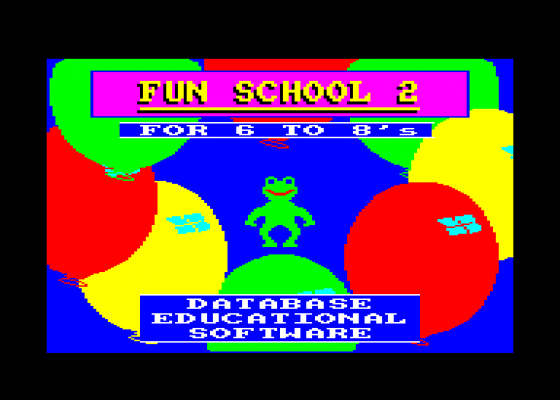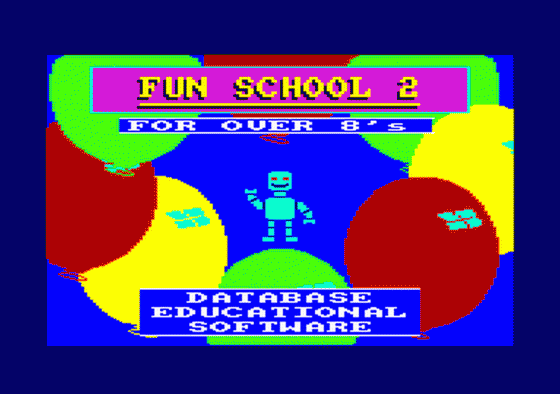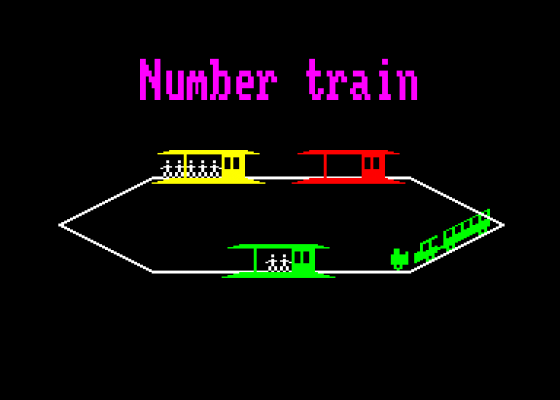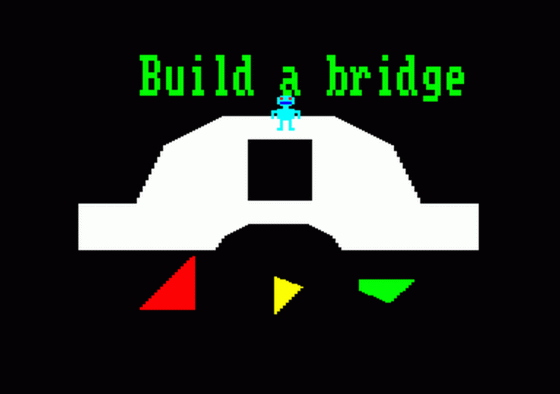
Amstrad Computer User
 1st June 1989
1st June 1989
Categories: Review: Software
Publisher: Database
Machine: Amstrad CPC464
Published in Amstrad Computer User #55
David Dorn explores the world of Fun School 2
Fun School 2
One of the fondest memories in my life concerns the time when I was teaching in a little primary school on a feudal estate up in the North East of England. There were thirty-one pupils, the Head Teacher, and me; no computers, no high technology, and lots of fresh air, One day. one of the junior aged children brought in the family's latest acquisition - a VIC 20 - and we all gathered round it to see what it would do. From that moment on, I knew (this was before the Beeb, never mind the CPC) that computers had to have a place in education.
The latest thing to happen to convince me even further is the release of Database's Fun School 2 series of suites. There are three collections of educational programs in this follow on to the original Fun School series, (which I have used for some time in the classroom) covering three age ranges - Under 6, 6-8, and 8 and over.
Those of you who saw the original series know that the presentation of the packages left quite a bit to be desired, yet in education the gloss can mean the difference between immediate acceptance by a child, and having to sell him on using it.

Database has taken pains to package Fun School 2 attractively, and include a freebie badge, and I think its pays off. My seven year old daughter, Suzanne, saw the packages dropping from the jiffy bag, and didn't waste any time in asking if she could use them. To be honest, I've had a job on my hands trying to prise her off the computer since then, because she enjoys playing the games so much!
Also included in the brightly coloured box is a neat fold-out card containing all the details that a parent or teacher needs to start a child away on each suite. There are no on-screen instructions, something which I criticised in the first series - they tend to confuse the child, instead, each of the programs in the collection has a section on the card which explains what the child is supposed to achieve, and the keys to use.
Thankfully the keys used in each game are consistent, and usually doubled up (the space bar often doubling for RETURN), so there is the minimum of time spent learning how to use a program, and more time to actually get down to using it.

Suzanne and I have been looking at the disc versions of the series, rather than the tape-based versions, and for some very good reasons. The under sixes have a fairly short attention time, and to wait for a tape-based game to load often discourages them to the point where they give up, and go on and do something else. can't say I blame them.
In my opinion, all educational programs should be on disc for this very reason. After all, no child can learn anything while waiting for the program to load, so it makes sense to cut that down as short as possible. The same applies to the other ages as well, though not to the same extent. If you don't have a disc drive, then you have little choice, I'm afraid, it's either tape or buy a DM, and I'd go for the latter if I were you!
Anyway, off the soapbox and on with the review! The under 6's package has eight separate programs, ranging from Shape Snap to Teddy Bear Picnic. My first impressions at the main menu were immediately favourable, as there are no upper case letters on it at all. For those of you that don't know, when a child is first learning to read, capital letters aren't used, so this shows that some research into the needs of early learners has been done. Good!
Shape Snap displays two large, brightly coloured shapes, and requires the child to press the spacebar if they match, or any other key if they don't. A correct response is rewarded with a tick, and a picture of a teddy. This teddy recurs throughout the under 6 disc (the other two discs have a frog and robot), and becomes a friend to the child. This again is a valid technique, and is nicely implemented. Find the Mole is a variation on the 'guess a number' theme, prompting with 'higher' or 'lower' till the child gets it right. The mole then pops up from one of five molehills, and teddy reappears. Nice, neat, and a good reward game.
Teddy Count is a counting game, with three parent/teacher selectable skill levels, as have most of the games on all three discs. This is straightforward, well presented, and useful.
Write a Letter allows the child to do just that. Many parents will be aware that children love to write especially when writing itself is a new skill, but quite often, the creativity of a child is stilted by the mechanical skills needed to form letters. This program allows the child to experiment with letter combinations and colour to produce results that are pleasing to the eye. Like all of the programs on the first two discs, a parent should be in attendance to help the child, although once a game is understood (not necessarily mastered) he/she ought to be near, but not quite so involved.
With Write a Letter, more help may be needed than with other programs. I rather like this one, and the fact that pressing CTRL-P copies the screen to a printer is a point in its favour. There's nothing more motivating than having some of your work plastered around your walls!
Colour Train is a colour matching game involving a train passing through coloured stations. When the colour of the train matches the station it's moving through, a dab at the spacebar gets the reward of animated passengers leaving and boarding the train. There is a lot of scope for parent and child to explore number, colour, and direction in this one, which is laudable. Pick a Letter and Spell a Word are more concerned with language. The former helps a child to distinguish one letter from another, and is nicely done, while the latter is self-explanatory. There are ten pictures representing ten words, each of which the child must spell. The words are correctly aimed, and the implementation of the game good.
The final game is Teddy Bear Picnic, in which the child's aim is to guide Teddy through a maze to get to the grub! Parents should sit with young children and use the words 'left', 'right', 'up' and 'down'. This makes a splendid reward game for good attempts on the others.
In all the games on the under 6 disc, animation and presentation seem to have been well thought out, and the display tuned to young eyes, with strong, primary colours, and bold positive shapes. I'm most impressed!
And so to the 6-8 years compilation. The format is much as the previous one, in that there are eight games to choose from, with the friend being a dancing frog! They follow on from the first disc in both presentation and consistency of keys, and also use some of the same presentation techniques to move on from concepts introduced in the earlier games.
I don't propose to go into detail about all the games in this compilation, as space won't permit, but I can say that the age range indicated on the box is about as accurate as you can be, Suzanne found that she could manage the lower level of each game with no bother, but that the higher levels taxed her somewhat, and made her think.
Since that is what this series is designed to do, I can do nothing but praise the authors! Mind you, having the thing running at 7.30am, while Daddy is still half asleep does nothing for my ego when I get an answer wrong (I'm a night person!), but says volumes for the quality of the programming. The final disc, for the over 8's is filled with eight challenging programs for older primary school ages. However, there's so much in it that it deserves review all to itself, which you'll see next month!
To say that I'm impressed with the Fun School 2 packages I've looked at this month is understating the case. I've always felt that the CPC is an ideal educational tool, and these two compilations lend weight to that argument. The graphics are good, the sound used sparingly, and to good effect, but what's more important, the content is spot on.
When I looked at the original Fun School series some time ago, I criticised spelling, presentation, and the fact that the age ranges specified were wide of the mark. All of these points have been answered here, and in grand style. I would be happy to use either package in a classroom, and can heartily recommend them for use in the home. Full marks to Database, you can go to the top of the class. Let's see more in this vein!




